- News
- Reviews
- Bikes
- Components
- Bar tape & grips
- Bottom brackets
- Brake & gear cables
- Brake & STI levers
- Brake pads & spares
- Brakes
- Cassettes & freewheels
- Chains
- Chainsets & chainrings
- Derailleurs - front
- Derailleurs - rear
- Forks
- Gear levers & shifters
- Groupsets
- Handlebars & extensions
- Headsets
- Hubs
- Inner tubes
- Pedals
- Quick releases & skewers
- Saddles
- Seatposts
- Stems
- Wheels
- Tyres
- Tubeless valves
- Accessories
- Accessories - misc
- Computer mounts
- Bags
- Bar ends
- Bike bags & cases
- Bottle cages
- Bottles
- Cameras
- Car racks
- Child seats
- Computers
- Glasses
- GPS units
- Helmets
- Lights - front
- Lights - rear
- Lights - sets
- Locks
- Mirrors
- Mudguards
- Racks
- Pumps & CO2 inflators
- Puncture kits
- Reflectives
- Smart watches
- Stands and racks
- Trailers
- Clothing
- Health, fitness and nutrition
- Tools and workshop
- Miscellaneous
- Buyers Guides
- Features
- Forum
- Recommends
- Podcast
review
£49.99
VERDICT:
A fast tyre in the dry on the firm and dusty, but not in damper, less-gravelly conditions
Weight:
850g
Contact:
At road.cc every product is thoroughly tested for as long as it takes to get a proper insight into how well it works. Our reviewers are experienced cyclists that we trust to be objective. While we strive to ensure that opinions expressed are backed up by facts, reviews are by their nature an informed opinion, not a definitive verdict. We don't intentionally try to break anything (except locks) but we do try to look for weak points in any design. The overall score is not just an average of the other scores: it reflects both a product's function and value – with value determined by how a product compares with items of similar spec, quality, and price.
What the road.cc scores meanGood scores are more common than bad, because fortunately good products are more common than bad.
- Exceptional
- Excellent
- Very Good
- Good
- Quite good
- Average
- Not so good
- Poor
- Bad
- Appalling
The Bontrager GR1 Team Issue Gravel Tyre is a dedicated dry-weather gravel tyre designed for one purpose – going fast in the dry. They do that very well – if you can guarantee such conditions in typically muddy, soggy Britain.
- Pros: Light weight, fast-rolling on smooth surfaces
- Cons: Little grip in the wet/on mud/in leaf matter; only one size
Reflecting the 'Team Issue' label, Trek does indeed issue the 40mm GR1 to its team riders – Sven Nys rode the GR1s on the second 50 miles of his ill-fated Dirty Kanza 200 attempt this year, after his chosen tyres suffered repeated flats. The GR1s performed well, but he pulled out after suffering stomach issues.
> Find your nearest dealer here
Weighing in at a claimed 430g apiece (our test pair weighed 850g), the GR1s are light for a tubeless gravel tyre – comparable offerings from Schwalbe weigh a bit more – the 455g G-One, for example (and those are £58.99 rrp). The GR1 comes in just the 40mm size, matched by the slightly more open-tread and heavier 40mm GR2 at 440g.
I found the GR1 looser than most tubeless tyres I've fitted; it took an extra five layers of tape to build up a workable rim bed on some non-tubeless-specific Mavic Open Pro rims to get them seated. This is a wheelset I've had half a dozen tubeless tyres on over the last two years, so yes folks, the turkeyshoot that is tubeless tyre-rim compatibility continues.
Once mounted, they sealed up fine using Stan's, and didn't leak any.
They feel fast on the road, corner well and are pretty quiet for a treaded tyre, so no complaints there. If you need to transit on road to a trailhead you'll not feel let down by rolling resistance or handling.
> Buyer's Guide: 9 of the best tubeless tyres for winter
Testing in autumn, in Scotland, finding stretches of actually dry gravel proved a bit of a challenge. Cornering with no side knobs to speak of isn't overly inspiring, but on dry-ish clay/gravel they didn't let go except once on a very off-camber section, and I was able to hold it together without too much squealing.
Dry leaves foiled them on a 15 per cent pitch, the rear wheel spinning out where other gravel-orientated tyres have stayed stuck. I found them to be good enough on dry gravel attacks, but put even a thin layer of silt over the top and things get slippery really fast as the tread fills. (The GR2 might be a better bet for such conditions, full review to come.)
Control on fast descents is okay, with 35psi more than enough to hold the shape in corners and prevent any rim dings with 40mm of volume to play with, but again the lack of any decent edge means when you do spot a smoother section to regain control in, chances are if it's wet you could be up for a quick course in counter-steering.
Braking over loose rocks and slabs of granite was predictable, if not as confidence-inspiring as a grippier tyre would be.
I could have seen myself using the GR1s at the Dirty Reiver race, IF there wasn't a hint of rain forecast.
> Buyer's Guide: 16 of the best gravel and adventure tyres
The GR1 is definitely a tyre for drier, smoother gravel/road expeditions. It will handle flatter bridleways and towpaths just fine, but don't expect much grip on damp, grassy, leafy or silty surfaces – which is pretty much all of the UK for six months of the year.
Verdict
A fast tyre in the dry on the firm and dusty, but not in damper, less-gravelly conditions
road.cc test report
Make and model: Bontrager GR1 TLR Team Issue Gravel Tyre
Size tested: 700x40C
Tell us what the product is for and who it's aimed at. What do the manufacturers say about it? How does that compare to your own feelings about it?
It's a tyre for race use on dry gravel.
Bontrager says:
For the roads less travelled
The GR1 Team Issue gravel tyre is designed for fast rolling performance and consistent traction on the roads less paved. It has proven success at the most demanding gravel races, and features Inner Strength Casing for lightweight puncture protection while maintaining a smooth, supple, fast feel. Plus, you can go tubeless for better performance and even more puncture protection.
Product details
A gravel tyre that excels in fast and firm conditions
Fast-rolling and predictable cornering with consistent traction
Tubeless Ready (TLR) for easy tubeless setup and puncture protection
Supple and strong Inner Strength casing provides lightweight sidewall protection
Lightweight 12 TPI casing provides great ride feel and tyre performance
Tell us some more about the technical aspects of the product?
Size
700C x 40mm
Diameter
700C
Width
40 mm
TPI
120 tpi
Durometer
60a/50a
Type
Tubeless Ready/Clincher
Maximum pressure
50 psi
ETRTO
40-622
Puncture protection
Inner Strength
Weight
430g (GR2 is 440g)
Rate the product for quality of construction:
8/10
No complaints.
Rate the product for performance:
6/10
For UK purposes these aren't the best – but in the dry they are pretty good.
Rate the product for durability:
9/10
After a month's bashing they still look like new.
Rate the product for weight (if applicable)
9/10
Claimed 430g for a 40mm tyre is pretty darn good; our pair came out at 850g so even better...
Rate the product for comfort (if applicable)
9/10
The pliant sidewalls make for a smooth, grippy ride in the dry.
Rate the product for value:
6/10
Cheaper than the Schwalbe G-One Bite Microskins (£58.99), but in the UK their value is questionable.
Tell us how the product performed overall when used for its designed purpose
If that purpose is dry gravel, they're great.
Tell us what you particularly liked about the product
On the road they roll fast and quiet.
Tell us what you particularly disliked about the product
The tread pattern, when used in anything other than dry rides.
How does the price compare to that of similar products in the market, including ones recently tested on road.cc?
Pretty much on a par with other high-end tyres of this weight, but perhaps more focused on the dry.
Did you enjoy using the product? Yes, ish.
Would you consider buying the product? Maybe
Would you recommend the product to a friend? For specific, dry use, yes.
Use this box to explain your overall score
For British conditions the GR1 isn't really a contender – unless you're aiming for Dorset farmroads at midsummer. In the right conditions the GR1 could be a race-winner, but as with anything 'Team Issue' it's the performance orientation that will let it down in more varied conditions.
About the tester
Age: 45
I usually ride: Merida Ride 5000 Disc My best bike is: Velocite Selene
I've been riding for: Over 20 years I ride: A few times a week I would class myself as: Expert
I regularly do the following types of riding: cyclo-cross, club rides, general fitness riding, mountain biking, Dutch bike pootling.
Living in the Highlands, Mike is constantly finding innovative and usually cold/wet ways to accelerate the degradation of cycling kit. At his happiest in a warm workshop holding an anodised tool of high repute, Mike's been taking bikes apart and (mostly) putting them back together for forty years. With a day job in global IT (he's not completely sure what that means either) and having run a boutique cycle service business on the side for a decade, bikes are his escape into the practical and life-changing for his customers.
Latest Comments
- BikingBud 4 hours 43 min ago
Was there?...
- ChrisA 6 hours 28 min ago
Balance bike: £600 - brakes extra.
- LeadenSkies 6 hours 48 min ago
As a non local who occasionally has to cycle from St Ives to Cambridge, at a sedately average speed of 12mph, I have had to use alternative routes....
- PRSboy 10 hours 14 min ago
I have two aero bikes- an Argon18 Nitrogen and an Orro Venturi. I love the way they feel on the road. I also like the style of the deeper section...
- Rendel Harris 17 hours 51 min ago
They have here: results at 14.40. The aero bike was roughly fifteen seconds faster than a climbing bike on a descent of around 6 km, so about 3km/h...
- wtjs 18 hours 5 min ago
As I've also placed here the nutter Audi and white van drivers, I've decided to give those no-nonsense keep-the-country-moving BMW drivers a list...
- polainm 19 hours 8 min ago
100% this. Policing mentality is formed by social 'norms', and the cyclist witchhunting across social media is the UK norm. Close passing a person...
- David9694 20 hours 33 min ago
That's a clear 2 points awarded there, but I guess as there's now a 25% tariff you'll only get 1.5
- mark1a 20 hours 44 min ago
Fawkes Cycles is only local if you live near Oldham. That's nearly 300 miles away from me. Also, any retailer that doesn't participate in an...
- David9694 20 hours 46 min ago
Openreach under fire over delays to Amesbury cabinet repairs...







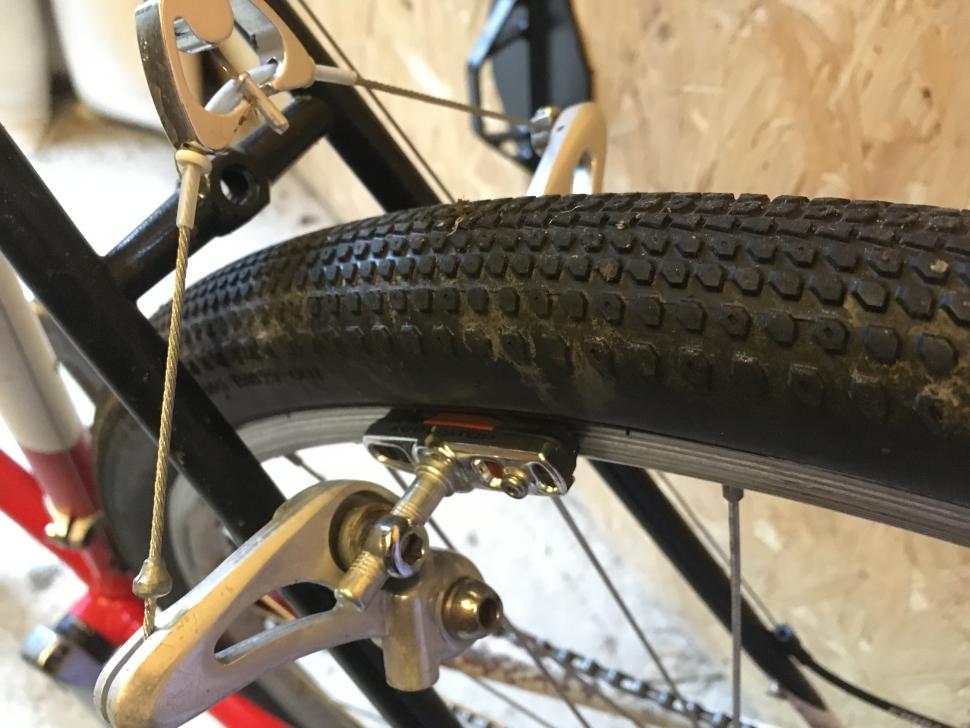
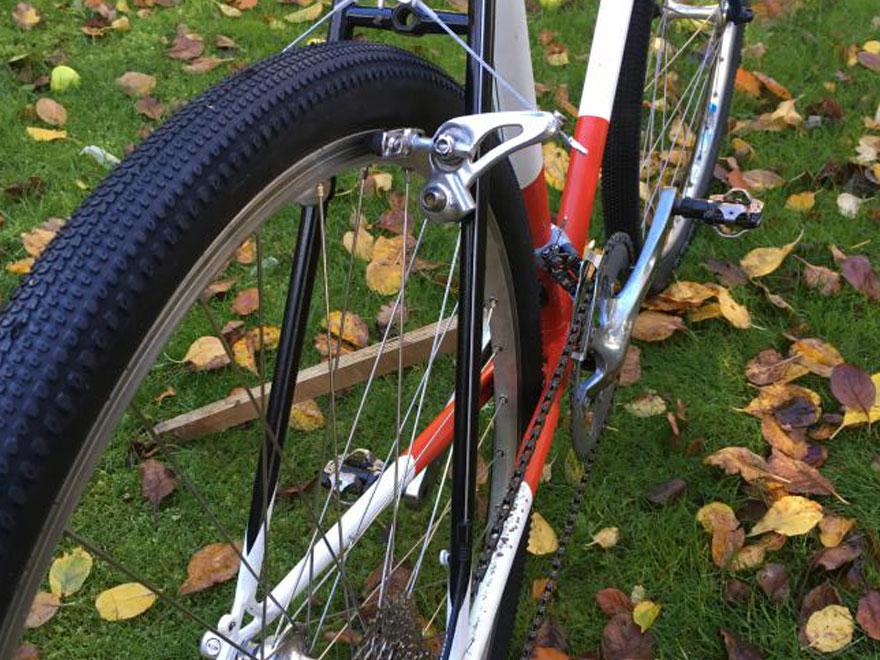


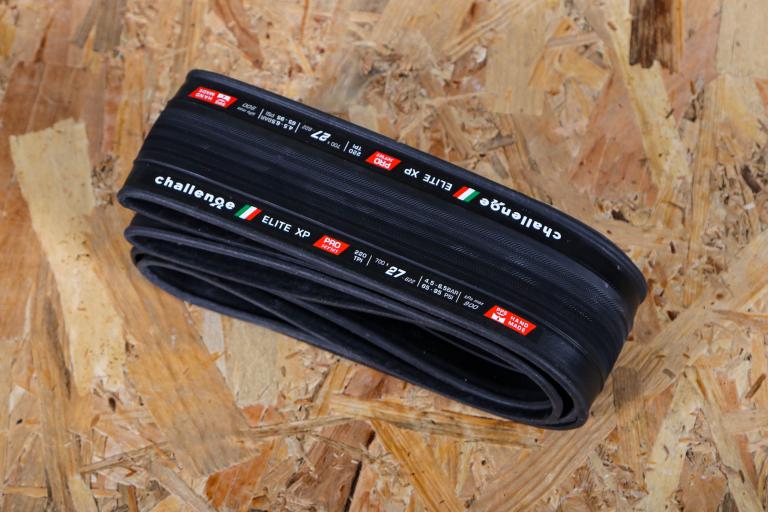
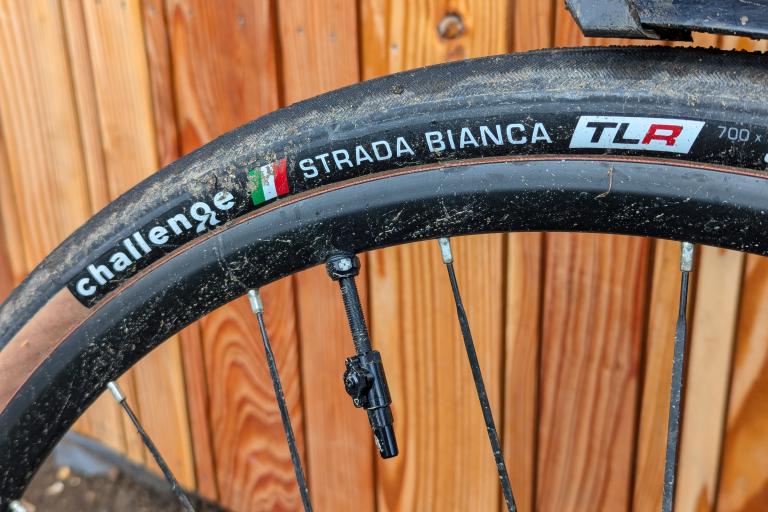
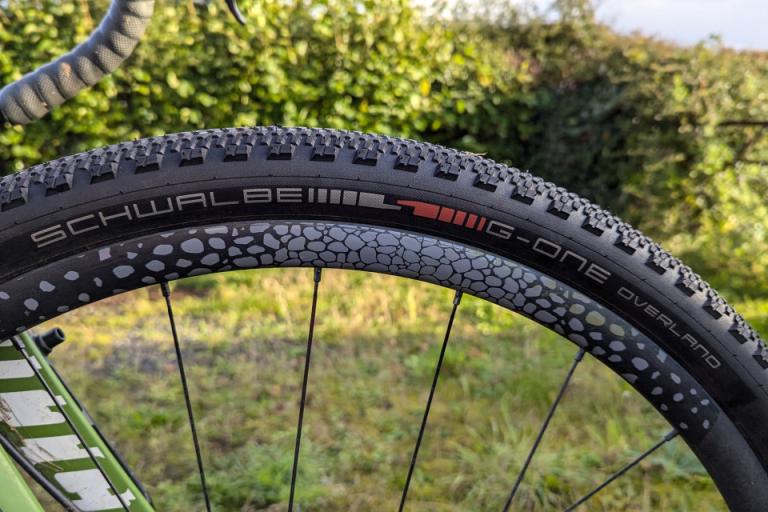
Add new comment
20 comments
Hi Mike,
Late to the party here, but just about to buy an Orbea Terra and having these tyres fitted at the recommendation of the shop. I will be 75% on road, so the fast and silent assessment appeals, but did you find the grip on wet tarmac wanting? Would be good to know as planning on heading out in all weathers... many thanks!
Schwalbe seem a bit confused. From the same link that you have posted...
Good point well made. Hadn't seen that.
Noting in the same post, they also say not to use a rim specifically marketed as 'Compatible with road tubeless-specific clinchers' (the Stans Alpha).
What's a consumer to do? No ETRTO standard for what defines a 'tubeless' rim, conflicting advice from manufacturers, and people who have actually done many, many thousands of miles mixing many brands of non-tubeless-specific rim with definitely tubeless tyres, without a hitch?
Should everyone with a tubeless tyre on a non-tubeless rim immediately run to purchase £500-worth of 'Tubeless compatible' wheels, despite never having had a problem? Should Schwalbe owners running Stans Alpha rims now sue one or both manufacturers for misleading advertising?
This post https://janheine.wordpress.com/2017/05/29/the-trouble-with-road-tubeless/ is very interesting: Jan Heine makes Compass tyres - a Most Excellent brand, that we've reviewed may versions of without any hitches. I've swapped Compass tyres of various sizes across five different wheelsets to date. Jan's take is that the important thing is to install dry, and overpressurize - like quite a bit above the rated max. Given the average tubeless tyre is likely to be run at around 50PSI (28mm / 80kg rider here) you can take them up to maybe 80PSI to see if there's a good fit. If they stay on, great. Drop the pressure back to normal and you're sorted. Noting Compass recommend never running their tyres above 60PSI, regardless of size or rider weight, due to the wide variance in rim specifications.
Case in point: the comment by 'Pete', May 29 2017 references a problem with tubeless tyres blowing off a Specialized Axis 4.0 wheelset. Wheels sold as 'tubeless-ready', natch.
The comment from Jan below pretty much nails it (my underlined emphasis)
Jan Heine, Editor, Bicycle Quarterly says:
June 2, 2017 at 7:09 am
The ETRTO specification is for mounting the tires with tubes, not tubeless. That shows that the answer you got from Specialized is simply skirting the issue you are experiencing, rather than providing useful information. If they told you that they had tested these rims tubeless with a large number of tires from various manufacturers, that would be more useful – but companies who don’t make their own stuff often prefer to let the customers do the testing.
Whatever it is, several customers have had trouble mounting Compass tires tubeless on the Axis rims. Specialized’s rims are all over the map – on my Diverge, the carbon Bontrager rims are so tight that mounting tires requires tire levers and brute force. Every time, I am concerned that I’ll break the carbon of the rim, because I have to push so hard on the tire levers. And this is on a 30 mm-wide rim – usually, wider rims make tire mounting easier because there is more room for a deeper well in the center.
These are typical problems of a mass producer who is farming out production to the least expensive bidders without adequate oversight. Of course, the company will disagree with any statement that their product may be sub-optimal. Until somebody gets badly hurt, and there is a recall…
...so no ETRTO standard, and wheels specifically sold as 'tubeless ready' suffering tubeless tyres blowing off them. I would say there's more risk in a customer trusting a wheel manufacturer claiming the rims are 'tubeless ready' and going crazy with the track pump, than a sensible installation, tested, on a rim not branded as 'tubeless ready'.
Again, there is no standard for tubeless rims. A few manufacturers have their own 'standards', which only apply if you use their tyres, and are not there for safety, they are there for ease of fitting and inflation. Just like your helmet does not make any promise at all regarding protecting you from anything (go on, check the label), wheel/tyre manufacturers will not guarantee any particular level of compatability when they have no control over the other brands involved. Maybe if there does emerge an ETRTO standard, we'll see progress here, but then like the current ETRTO 'standard', how ridgidly a manufacturer actually adheres to it is a mug's game.
Noting: Wiggle have a blog post aimed specifically at a non-tubeless rim conversion: https://guides.wiggle.co.uk/how-convert-your-wheels-tubeless
I could find other examples where brands or retailers either said using non-'tubeless' rims was OK, or didn't explixitly say they weren't. As I'm sure I could find examples where brands or retailers said they absolutely were essential, and you risked dying in flames should you not use them. As A Thing to worry about in cycling, it's low on the totem pole. If you can inflate a tubeless tyre, it's a good fit. If it doesn't pop off when overpressurised, it's a good fit. If you want to buy into a brand 'system' because it gives you confidence, great. Go for it. But be aware you are then stuck with that brand's tyre forever, or until another brand specifically agrees to match it.
Cycling has many areas where there is hard and fast advice everyone - shops and manufacturers - agree on: Always use a torque wrench set to the manufacturer's specifications. Check your bike end-to-end before every ride. Replace rim-braked wheels before the wear indicators disappear. Do not re-use contaminated disc brake pads. Replace your helmet immediately if it is dropped. Regularly inspect carbon steerer tubes. Never set up a non-tubeless tyre as tubeless. etc.
'Never use non-tubeless rims with tubeless tyres' is not one of the golden rules.
...and in this specific case, it made absolutely no difference to the review content or score, other than to note that the GR-1 seemed a tad looser than other tubeless tyres - empirical fact, and a selling point if you had a particularly-difficult wheelset - tubeless or otherwise - and were looking for an easier-mounting dry gravel tyre.
Before any more tubeless experts and internet lawyers pile on with further character assassination, let's defer to the market leader in tubeless, a company with by far the widest range and most experience in the sector: Schwalbe.
...who, I hope everyone will agree, know a hell of a lot more about tubeless than any Road.cc reviewer or commentor (even ones who felt so incensed as to sign up just to post a comment).
Ahem: https://www.schwalbe.com/en/tubeless.html
Capture.JPG
I'm genuinely angered by this review, you should know better road.cc
Reviewing a product intended for set up in a particular manner by the manufacturer and ignoring that completely based on your own preconceptions about that technology is utterly ludicrous.
'Ok, yes, there are 'standards'. Mavic has one. Bontrager have one. So does Schwalbe, and Hutchinson. Problem is no-one else has agreed to adopt any them as the industry standard, and even if they did, other 'standards' would no doubt arise. '
The fact that all those manufacturers agree that tubeless rims / tyres should be different in their design to the norm, so much so that they have all developed their own version of it, should tell you that there is a reason why tubeless tyres require a tubeless rim. It's a fact so blindingly obvious that I'm shocked I have to mention it to someone who is paid to review products.
What's worse is that one of your readers may well see this and think 'hey, i'll give it a go on my rims' and as you will know home made tubeless has massivley varied results. They may end up having a serious accident in a misguided attempt to set up this tyre or others on their own rims.
You have a responsibility to review these products as they are intended to be used and set up as a professional publication in much the same way a shop has the responsiblity to fit these tyres as they are intended to be fitted. I guarantee any shop in the land would never fit a tubeless tyre like this and as somone in the trade the thought of 'why' shouldn't be worth a second thought.
Hi KiwiMike, thank you for taking the trouble to reply generously to my sarky jibe. Clearly you have experience with tubeless. However my point stands. Not fitting the tyre to a proper tubeless rim does weaken your review because you simply haven't used the correct type of rim. The original Open Pro rim is very narrow by modern standards and this will affect the tyre profile. You may claim this makes no real difference to the ride characteristics, you might be right, but Bontrager can still with justification claim their product was not used as intended.
The install might not be skanky but it is ghetto.
While we're on the subject I don't think the debate is helped by trotting out the line that there are no 'standards'. I have tubeless experience too and across quite a range of, yes, tubeless-ready rims from and tyres I have not failed to mount any tyre on the target rim. This lack of standards thing is not a real issue.
There is no 'correct type of rim'.
The rim measures 21mm outside, about 17mm inside. That is pretty typical, certainly the trend is for wider, but most road rims are still 17-19mm inside. The ETRTO 2007 chart on rim width vs tyre size lists 40mm as perfectly fine for a 17mm rim, as do other charts, some considered conservative, others optimistic. The ultimate arbiters are 'does it ride good?' and 'does it fall off?'. A brand-new Stan's Alpha 340 tubeless road-gravel rim is the same dimensions inside and out as my 80's Open Pro.
The GR-1 tyre, fitted, measures exactly its 40mm advertised width. That to me says that the rim is exactly the width Bontrager envisioned it being fitted to. A wider rim would widen the tyre, meaning if you had purchased it to fit a bike with 40-and-a-bit clearance, if Bontrager hadn't sized it right you'd be pissed.
'Ghetto tubeless' usually means using a non-tubeless tyre, gaffa/gorilla tape and god knows what else. This, it is not.
Ok, yes, there are 'standards'. Mavic has one. Bontrager have one. So does Schwalbe, and Hutchinson. Problem is no-one else has agreed to adopt any them as the industry standard, and even if they did, other 'standards' would no doubt arise. Fortunately with tyre-rim interfaces, 'close enough' is generally fine (sore thumbs/snapped levers aside), unlike say BB's with pressfit tolerances that either work or don't.
The internal width of the open pro is 15mm.
iirc, the etrto chart recommends a tyre range of 23 to 32mm for a 15mm internal width rim.
Yes, I just looked up the specs for the original Open Pro and it is indeed 15mm inside. That makes trying to fit a tubeless a right faff because there's barely enough space for the valve between the tyre beads - I tried this ages ago and that was enough to push me to investing in proper rims.
There is now a tubeless-specific OP rim, the Open Pro UST. It's 18.6mm internal, so must be 24mm-ish external. But maybe that wouldn't fit between the reviewer's retro canti brakes.
Re Mima: exactly, very well put.
Dunno about the tyres, but how clean and simple do canti brakes look?!
Almost retro cool.
that's for two of them.
Oops, my mistake. Sorry 'bout that.
Is 850g "lightweight" for this type of tyre?
"Weighing in at a claimed 430g apiece (our test pair weighed 850g),"
If I were Bontrager I wouldn't be too pleased about my product being reviewed on some skanky ghetto tubeless setup. C'mon road.cc you can do better than this.
Hi there Miller
Let's unpack 'skanky' and 'ghetto' there.
My setup uses Stan's tubeless rim tape, and Stan's tubeless valves, and Stan's tubeless sealant. It's a tubeless tyre. I even used some prototype Tubeless Air to inflate it. The only non-tubeless-specific aspect here is the rim, and in that case, the only 'non-tubeless' aspect of it is in that it lacks what you could argue are beneficial installation features like a rim bed barb for air retention during setup.
There is no industry standard for road tubeless tyres or rims, although Mavic have made a start but they cost about £450 more than the 'non-standard' wheelset - which is a hell of a premium to pay for a sticker. And as best I can ascertain, it's still not approved by ISO or ETRTO. MTB has had UST for ages.
I have reviewed many tubeless tyres over the last five years, on many different rims, branded 'tubeless-ready' or not. Critically, I have never and would never recommend setting up a non-tubeless tyre on any rim, 'tubeless ready' or not. That will almost certainly kill you, eventually.
Tyre reviews shouldn't focus on ease of tyre fitting, as the reader is almost certanly likely to have different rims to the ones used in the review. So my review score for just a tyre almost never includes mention of ease of fitting as a contributory factor to the overall score. I found the GR-1's to be looser than others, but no biggie.
There is no standard for what 'tubeless ready' means, for either tyres or rims. In some cases it's a rim bed with no spoke nipple holes, for others it's a special profile to aid seating or retention of the bead - retention being much more important off-road as the very low pressures can lead to burping of a tyre that is a loose fit. This - to my knowledge - has never happened with a road tubeless tyre, as the pressures are way too high (most people at least 40psi) and the fits too close, even without a defined spec.
Like I said in the review, I've never had an issue with any tyre on these rims. The review focused on the important aspects - grip, cornering, rolling resistance etc. Bontrager have made a tyre that's fast, rolls well, is good in the dry and is light for what it does and the size. What rim it was tested on has no bearing on any of these findings.
Quick question - what is 'they' and what were you comparing them against ? To be fair to Mavic, £ 450 is pretty close to what two 2019 Aksium Elite UST wheelsystems might cost you - which obviously include the tyres and, presumably, the premium stickers.
t'were these ones I were referring to. Granted, there are a few other variables, but as noted in the review, seems to be mostly down to having 'UST' stuck on the side.
Tah - even with the £80-100 in price inflation and hugely improved tyres, that's still some jump. Mind you, i'd have a wee bet that most people looking to weigh up a move to tubeless aren't in the market for a £ 1500-2000 wheelset and the UST sticker hasn't seemed to effect the Aksium and Kysrium end of the market much, if at all.